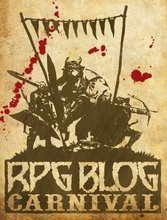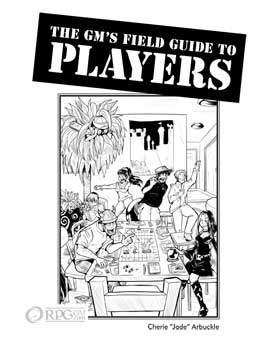We’re coming into the home stretch of the list. Today we’ll cover Q – U
- Qin: A game that looks like it does for China what Legend of the Five Rings did for Japan. It’s set in China’s Warring States period. I love China as an RPG setting and can’t wait to get my hands on this and give it a try.
- Rifts: Okay, this is actually a rather well-known game but it’s so intriguing I had to include it. I have to admit, this game’s been sitting on my shelf for years and I’ve not yet had a chance to play it. You want cross-genre? Take just about every genre of RPG game you can think of, throw them into a blender and set it on “puree” and you’ll get Rifts. Oh for more time….
- Space 1889: Set in a future that never was, this game bills itself as “Science Fiction Role Playing in a More Civilized Time”. Imagine the Victorian speculations about space were true: Mars does have canals carrying water from the polar ice caps to parched city-states and Venus is covered in thick, steaming jungles dense enough to make those of Africa and South American look like botanical gardens, populated with dinosaurs. Now image that Victorian science could’ve gotten there and you’ve got Space 1889.
- Talislanta: Made famous in the the late 80’s for it’s Dragon Magazine ads that promised unique fantasy races “and no elves!”, Talislanta is a high-fantasy game system inspired more by pulp-fantasy than by Tolkein. This gave Talislanta a sense of originality lacking from many D&D alternatives.
- Toon: In Toon, you play … you guessed it … a cartoon character. I particularly like the fact that all characters have a “back pocket” (whether or not they’re wearing any pants) that can carry pretty much anything, including an anvil — one of Ace Corporation’s best selling-items available for speedy mail order.
- Tales from the Floating Vagabond: Yeah, this makes three “T’s, but this is one of my all-time favorites, so I had to include it. Similar to Murphy’s World, which I wrote about yesterday, the Floating Vagabond in pan-dimensional bar where literally anyone could drop in from anywhere. The system is extremely mechanics-light with an emphasis on humor. It’s a skill-based system which allows you to Mess With Dangerous Goo, Hurt People Badly, Hurt People Really Badly, Swing Pointy Thing with Panache, and Look Good at All Times (actual skills from the game). In addition, each character has an Effect — like a personal schtick — giving them special abilities. But watch out for those Space Nazis™…
- Underground: Another satirical game, Underground is set in the year 2021, but this is no Cyberpunk. The PCs are genetically enhanced ex-mercenaries with souped-up powers and a extreme desensitization to violence. And now they’ve got their walking papers and have been discharged into a 21st century dystopia. Good, wholesome family fun 😉 .
Tomorrow: the final installment — V – Z (and yes, I really do have at least one game for each letter).






